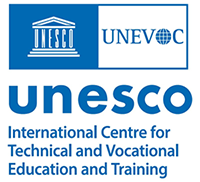
The UNESCO-UNEVOC International Centre: Who We Are | What We Do | Working With Us | Get in Touch
The UNEVOC Network: Learn About the Network | UNEVOC Network Directory
For Members: UNEVOC Centre Dashboard
Thematic Areas: Inclusion and Youth | Digital Transformation | Private Sector Engagement | SDGs and Greening TVET
Our Key Programmes & Projects: BILT: Bridging Innovation and Learning in TVET | Building TVET resilience | TVET Leadership Programme | WYSD: World Youth Skills Day
Past Activities: COVID-19 response | i-hubs project | TVET Global Forums | Virtual Conferences | YEM Knowledge Portal
Our Services & Resources: Publications | TVET Forum | TVET Country Profiles | TVETipedia Glossary | Innovative and Promising Practices | Toolkits for TVET Providers | Entrepreneurial Learning Guide
Events: Major TVET Events | UNEVOC Network News
(Modularisation) A system in which qualifications consist of a number of modules, each of which can be certificated independently. Sometimes, this is known as ‘unitisation’ and ‘modularisation’ is used to refer to a system in which learning programmes consist of a number of components.
The breaking down of whole educational qualifications into useful sub-units (modules) each of which has measurable outcomes that are assessed (and in some cases certified) in their own right as well as contributing to a larger overall educational outcome (primarily a qualification).
A system where training content is divided into independent units or modules which can be combined to form a program suited to individual needs, technical developments, or occupational structure, etc., permitting continuous adaptation of the program.